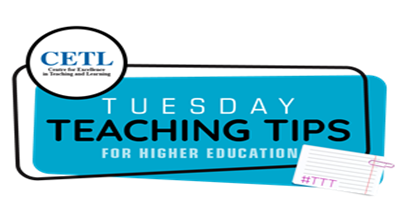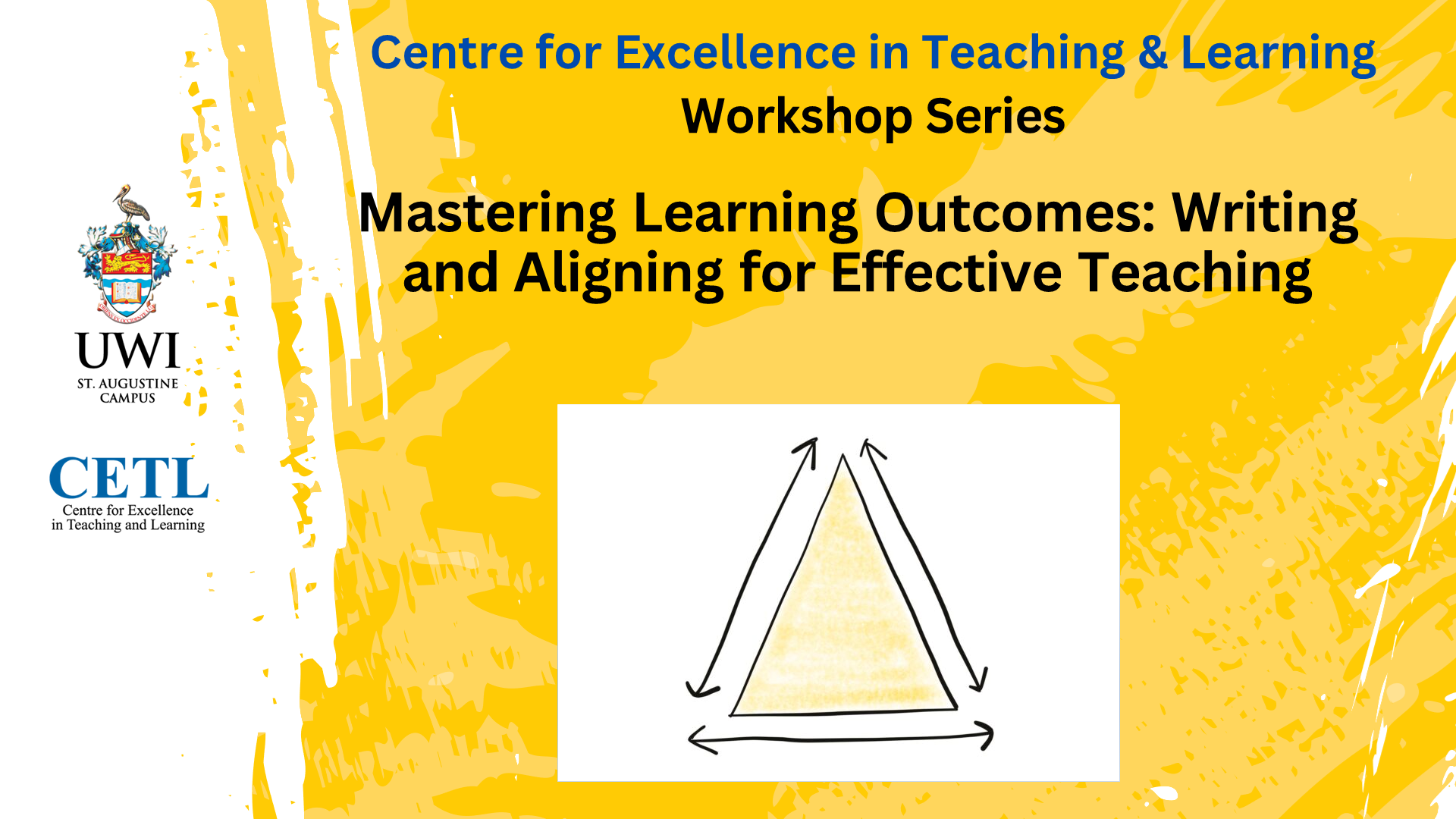
Good day Colleagues,
Welcome back for another installment in our Tuesday Teaching Tips (TTT) Blog. In our previous installments of TTT for the semester thus far, we have explored topics such as:
-
MyeLearning Access and Support
-
Myelearning, Resources, Activities and Universal Design for Learning (UDL)
-
Universal Design for Learning (UDL) and H5P
-
Active Learning and myeLearning Activities
-
SECTIONS for Technology Selection
-
Research and the Power of Artificial Intelligence (AI)
-
Formative assessments and the myeLearning GradeBook.
As we continue our mid-semester phase this week, we will explore the alignment of learning outcomes with assessments. Learning outcomes are the foundations upon which all other course elements are built, and are therefore quite important in effective teaching, learning and assessment.
A – What is a Learning Outcome?
A learning outcome (LO) may be defined as the knowledge, skills, or attitudes your learners acquire as a result of participating in your course or lesson. More specifically, learning outcomes are statements indicating the end result for a learner following a course or learning activity. It specifies what you can observe the learner do after a learning experience/activity.
For this reason, learning outcomes should focus on:
-
The result of the learning experiences
-
The essential knowledge, skills and attitudes
-
The desired end of the learning experience (not the means or the process)
-
The basic performance tenets that must be satisfied to successfully complete your course or programme
-
Answering the question: “Why should a student do this course?” or “Why is your course important?” or, “What will a learner gain by completing your course?”
B – What is Constructive Alignment?
Alignment between learning outcomes and assessments is the matching of your lesson/course learning outcomes with relevant learning activities/(formal or informal) assessments. Sometimes called constructive alignment (Biggs, 1999), building alignment among assessments, teaching methods, learning activities and learning outcomes also allows you to develop and communicate the pathway for students’ engagement and learning progression. It enables you to explain what knowledge and skills were expected on entry to the course and the knowledge and skills that will be developed throughout the course. In so doing, this process ensures that assessments/learning activities accurately measure what students are expected to learn, and thereby foster effective teaching and learning.
Ideally, constructive alignment should occur on three different different levels i.e. a programme level, an overall course level, and even a course module level. This ensures that alignment exist among the course assessments, learning activities, course learning objectives, and the overarching programme outcomes. At the course level, this may allow you to detect redundancy of course assessments (i.e. if multiple assessments are measuring the same learning objective(s)), and if all or some of the learning objectives are not addressed/measured (see the following illustration). At the programme level, constructive alignment help you evaluate the necessity or relevance of a particular course in your overarching programme.
C – Aligning Learning Outcomes with Assessments?
Constructive alignment is also a process that includes the following with some tips for your consideration:
-
Defining Learning Outcomes:
-
Start with the “Why” – Before designing assessments/learning activities, clearly articulate the intended learning outcomes, or what students should know, feel, and be able to do upon completion of a course or unit. In other words, consider: “What is the whole point of the assessment or learning activity?”
-
Be Specific and Measurable – Learning outcomes should be specific, measurable, achievable, relevant, and time-bound (SMART). For example, instead of “Students will understand photosynthesis,” (which is vague and too abstract to be measurable), try “Students will be able to explain the process of photosynthesis, including the inputs, outputs, and importance of the process in a 3-minute presentation”.
-
-
Designing Activities/Assessments:
-
Match Activities/Assessments to Outcomes – The learning activities or assessment methods (tests, essays, projects, presentations, etc.) should directly align with the learning outcomes.
-
Consider Different Types of Assessment – Use a variety of activities/assessment methods to evaluate different aspects of learning, such as knowledge, comprehension, application, and critical thinking. To this end, you may consider more alternative forms of assessments i.e. assessments/activities that go beyond a Multiple Choice Exam #MCQ but may include a reflective journal, an ePortfolio, coordinating an event/initiative, implementing a solution to a problem.
-
Develop Clear Rubrics – Create rubrics or scoring guidelines that outline the criteria for assessing student performance and ensure consistent evaluation.
-
-
Evaluating Student Performance:
-
Analyze Results – After administering assessments, analyze the results to determine if students have met the learning outcomes.
-
Provide Feedback – Use assessment results to provide students with feedback on their strengths and areas for improvement.
-
Reflect and Revise – Reflect on the effectiveness of the assessments and make adjustments as needed to improve future instruction and assessment.
-
D – Additional Resources
Click Here to Register for This Face-To-Face Session
The CETL is happy to announce its upcoming webinar Mastering Learning Outcomes: Writing and Aligning for Effective Teaching. Scheduled for Wednesday 19th March 2025 at 9:30 AM to 12:00 PM, this hands-on face-to-face workshop will guide you through the essential process of aligning your learning outcomes to learning activities and/or assessments. This alignment will allow for more purposeful, targeted and impactful learning experiences. Whether you are a new educator or looking to refine your skills, this workshop will provide you with the tools to effectively design, evaluate, and align your learning outcomes to instructional activities and assessments.
What You’ll Learn:
• The importance of learning outcomes in shaping effective teaching and learning.
• The key characteristics that define high-quality learning outcomes.
• The criteria for evaluating learning outcomes for clarity, specificity, and alignment.
• How to align learning outcomes with instructional activities and assessments for a cohesive educational experience.
We hope the aforementioned resources are helpful.
Should you need any further assistance, please feel free to contact us.
Regards,
The Centre for Excellence in Teaching & Learning (CETL),
The University of the West Indies (UWI),
St. Augustine.



